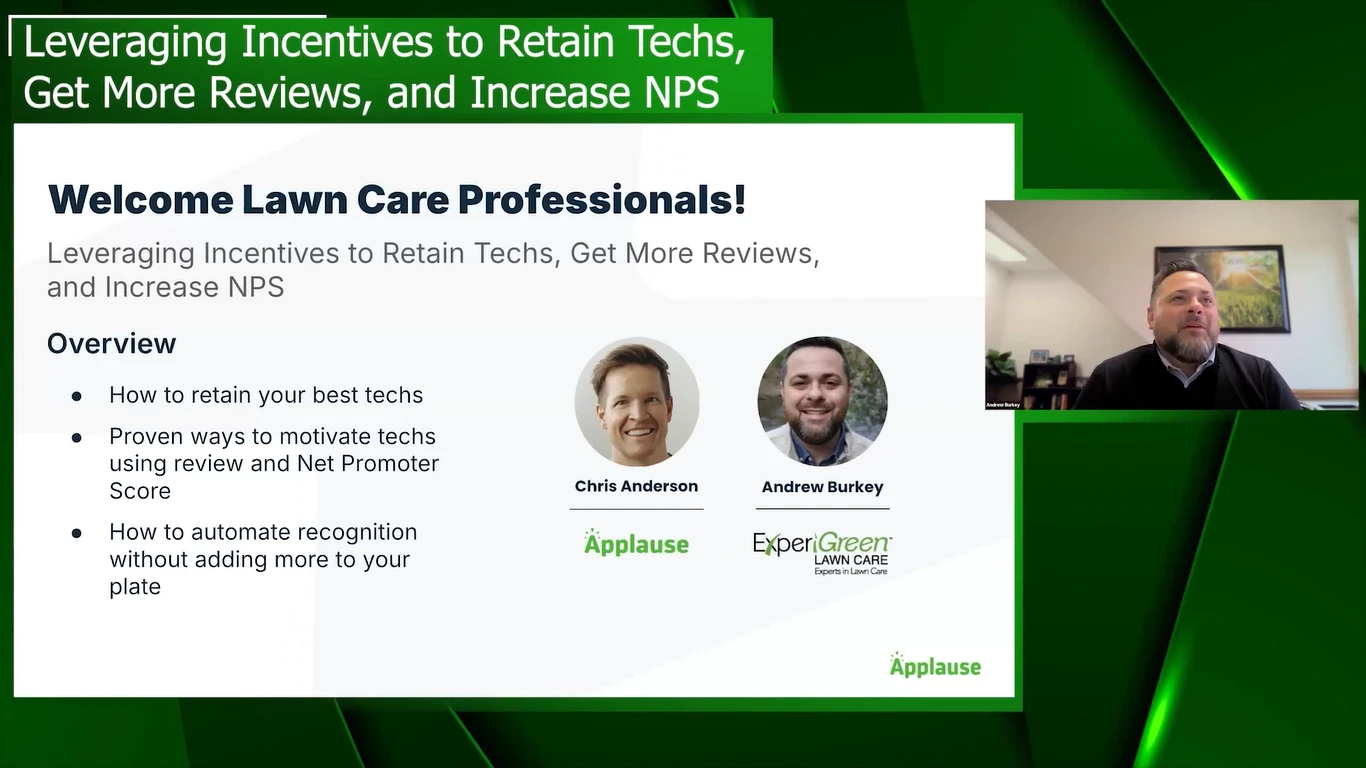Technology has brought the green industry a long way. When it comes to the world of irrigation specifically, manufacturers are constantly developing new software, hardware and even Web-based tools to help water mangers do their jobs better.
|
|
“In the past, I’ve known irrigation contractors who would typically walk around a residence trying to determine how many control valves a system may need and they’d write up a quick bid based on their guess and hand it to the customer,” says John DeCell, president of Software Republic, which manufactures RainCAD design software. “With that approach, the customer would have nothing to base a buying decision on other than price. Since the contractor made price the only factor to consider during the purchase, the customer would usually select the contractor offering the lowest price.”
Using irrigation design software not only accurately lays out a given irrigation system, but it also puts the contractor in a more professional light among his or her clients. “Many contractors believe they are in the business of installing irrigation systems, but the truth is they can’t install a system until they sell one,” DeCell says. “A formal design using a computer program gives a contractor a chance to educate his or her clients on the value of the irrigation system they’re getting, even if the price is higher than their competitors. They have a visual tool that allows them to illustrate how and why rotary zones are separated from spray zones, why areas that receive a lot of sunshine are zoned separately from shaded areas of a yard, and they can even display a densogram of potential wet or dry areas to educate the customer on the need for proper head-to-head spacing.”
|
|
DeCell says customers who are afforded the opportunity to really understand what a properly design irrigation system will do for them are more likely to pay a little extra. “People don’t mind paying a little extra – they just want to know what they’re getting for their dollar.”
While some large-scale irrigation design programs (some for use on golf courses) are designed to work in conjunction with AutoCAD construction design software, there are a number of standalone programs geared toward light commercial and residential irrigation design that don’t require the expensive AutoCAD software to run. RainCAD, WaterMark PRO and Fastquote (manufactured by Walla Walla, Wash.-based MP Rotator) are among these standalone programs and all three operate similarly.
Beyond design software are water management tools that allow irrigators to accurately set irrigation timers to water just the right amount in just the right places. Incorporating things like evapotranspiration (ET) data and other site-specific information make water management tools even more useful.
|
|
InSite, manufactured by Irrisoft, and Software Republic’s Irricalc are two such programs that give contractors the simplicity of entering a few pieces of information about the irrigation system and the site, and then calculate an appropriate watering schedule instantly. “The software becomes a tool to build a good schedule because it’s site-specific,” says Steve Moore of Irrisoft. “The contractor can input the type of plants, soil conditions, slope, the performance capabilities of the system and the controller, and creates and accurate start times and run times for the system.”
Precipitation rate, soil infiltration rate, soil moisture holding capacity and other characteristics also are considered by some programs. DeCell adds that, oftentimes, contractors also can input daily or historical ET data to make each irrigation schedule even more precise. “Based on the information input by the irrigation contractor, the program will tell you how many minutes to water,” he says. “From there, you can simply take the schedule generated by the software and program it into the controller.”
|
|
Finally, Web-based irrigation scheduling allows professionals to access their accounts from anywhere at any time as long as they have Internet access. In a basic setup, the controllers on a given site are hard-wired or radio-linked together and a single modem is set up to communicate to the entire system. With a subscription to this type of service, a contractor could log onto the software provider’s Web site, access the modem though his or her online account and control the system remotely. Each central-controlled site requires its own modem, but all the modems for a single contractor’s sites are accessible with one online account. The Web-based platform allows contractors to write new irrigation schedules, perform rain shutdowns, turn individual valves or programs on and off, adjust water budgets and receive reports and alarms from sensors on the system.
ALL SYNCED UP. From pagers, to cell phones, to laptops to hand-held computers, the world of technology and instant communication continues to get more sophisticated – and green industry contractors keep finding ways to bring those advancements into the field and onto job sites with them every day. In the irrigation market, numerous software programs help contractors design and program irrigation systems with more accuracy than pencil sketches and hand-worked math could offer. But irrigation management isn’t the last frontier of software for this portion of the industry. Many manufacturers also offer business-management tools that allow contractors to extend their technological savvy to the operational aspects of their businesses as well.
|
|
“Cell phones and global positioning systems and BlackBerry devices are becoming so mainstream that taking a digital approach to your everyday work processes just makes sense – and makes your job easier,” says Gurmeet Singh, product manager for RainBird, Tucson, Ariz. “Technology these days lets you incorporate much more efficiency into your day-to-day tasking.”
One such solution that RainBird offers is its CMS Pro software program for use with personal digital assistants (PDAs). Allowing technicians in the field to “sync up” with computers in the main office, Singh says CMS Pro lets irrigation companies streamline their work order processes and minimize the amount of time and materials wasted on paper trails involved with work requests, billing, payroll, etc.
“Think about how an irrigation contractor does his or her job today,” Singh says. “A customer will call the office to request attention on their system; someone answer the phone and take the message – or fill out a work order form if the company has a process in place – and then the work order sits on a pile somewhere until the contractor is able to pick it up and make the time to write the work request into the schedule and pass the information onto the technician who will follow up with the customer.” The same time- and paper-consuming process is reversed after the technician finishes the work order, turns in his or her report and waits for the information to go through the billing phase.
CMS Pro, Singh says, creates a faster, more efficient workflow for an irrigation contractor’s office. “With a package like this, the program can be loaded onto the computer at the contractor’s main office and then onto PDAs for the company’s technicians,” Singh explains. “The software lets the contractor manage a customer information database and details of each technician’s routes. If the same work request comes in, the contractor can quickly identify the appropriate technician to handle the job, as well as a calendar of where the technician is scheduled to be and when, so the new job can be dropped into the schedule right away.”
With a master schedule planned on the company’s main computer, technicians can then bring their PDA’s to the office, sync up to the main program through a phone line, at which point the newly updated schedule would be downloaded. “The PDA can download all the information for that particular technician on that day, and this can be done from wherever there’s a phone line,” she explains. “For instance, the technicians could all leave their PDAs at the shop, download the next day’s schedules before they leave or the next morning when they get in, and be ready to go for the day. Or, for a technician who handles jobs far from the shop, it may be easier to have him or her sync up from their own home so they can drive straight to their first job site in the morning, rather than coming into the shop.”
Sync-ups work both ways, so as technicians use their PDAs during the day to report when jobs are finished and record any comments, that information is also uploaded into the main system when the PDAs and computers are synced. “Because all that information is dumped back into the customer database, the program on the main computer will reflect what the technician did and when they did it,” Singh says. “It can send that information straight into Quickbooks for easy accounting and payroll with one click, so work can be invoiced almost immediately.” She adds that the program also can track parts inventory that the technician used during the day and deplete those amounts from the master inventory, which allows companies to reorder parts and pieces more efficiently.”
Generating purchase orders is also a function of another business-management software tool available to irrigation contractors. Manufactured by Irrisoft, Quik-Irr estimating software lets contractors easily prepare materials lists for a given sprinkler installation or repair job, with pricing built into the program so job cost estimates come out accurate.
“Quik-Irr can let a contractor generate a quick estimate in about five minutes,” says Steven Moore, president of Irrisoft, North Logan, Utah. “That’s a big time saver and takes the guesswork out of estimating.”
Set up with many irrigation manufacturers’ product lists already included, contractors can use Quik-Irr and similar programs to itemize the materials needed for a job, generate purchase orders based on the materials list and export the list into excel or Quickbooks for easy invoicing. “I’m sure almost every irrigation contractor can relate to the thought that if you make mistakes in estimating, you’re more likely to get the job,” Moore says. “With estimating software, a contractor can customize his or her pricing to include necessary markups so they don’t have to worry about losing money on a project.”
For business software solutions like Quick-Irr, contractors can expect to spend about $650, while programs like CMS Pro are available through subscriptions with monthly fees (the PDAs are sold separately). Subscription fees for CMS Pro start at $160 per month for the first user license, and $42.50 for each subsequent license. A contractor who wanted three user licenses – one for him or herself and two for technicians, would then pay about $240 per month. Despite the expense, Singh says the payoff can be high. “The amount of money saved using these tools will vary from company to company, but contractors have told us that by using CMS Pro they’re able to work more efficiently and therefore finish more jobs in a year,” she explains. “Also, because you can invoice faster, you’re collection rates are higher, which means improved cash flow for the business.”
Latest from Lawn & Landscape
- Retargeting Ads – A Secret Weapon for Growing Your Lawn Care Business
- Leading a growing company
- Project EverGreen launches Clean Air Calculator
- Rain Bird acquires smart lawn care company OtO from Toronto
- PBI-Gordon names Marvin as VP of research and development
- Mean Green rolls out Vanquish Autonomous mower
- Focal Pointe launches new podcast series
- Navigating due diligence checklist for selling lawn business












